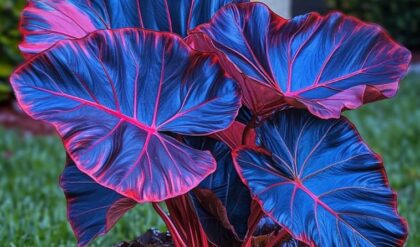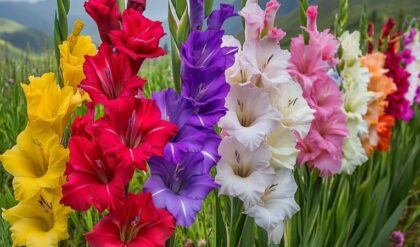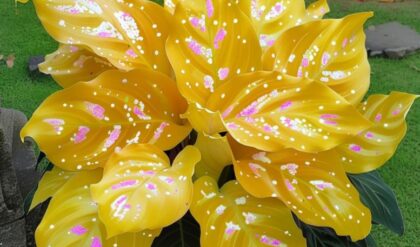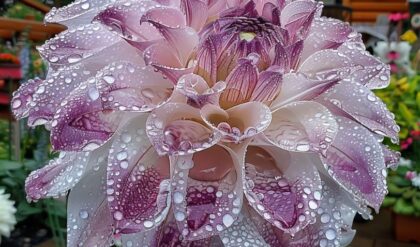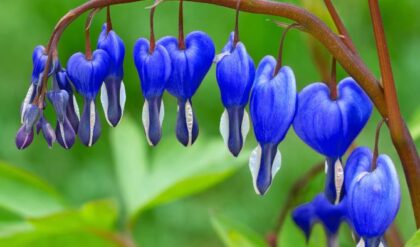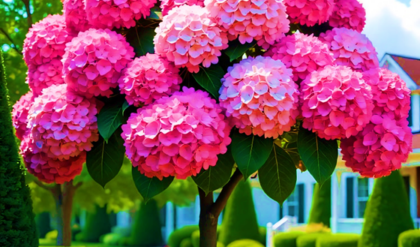When one thinks of caladiums, the vibrant foliage often takes center stage, overshadowing any mention of flowers. However, the question arises: Do caladiums flower? This inquiry opens a labyrinth of botanical intrigue and showcases the duality in the life of these tropical perennials.
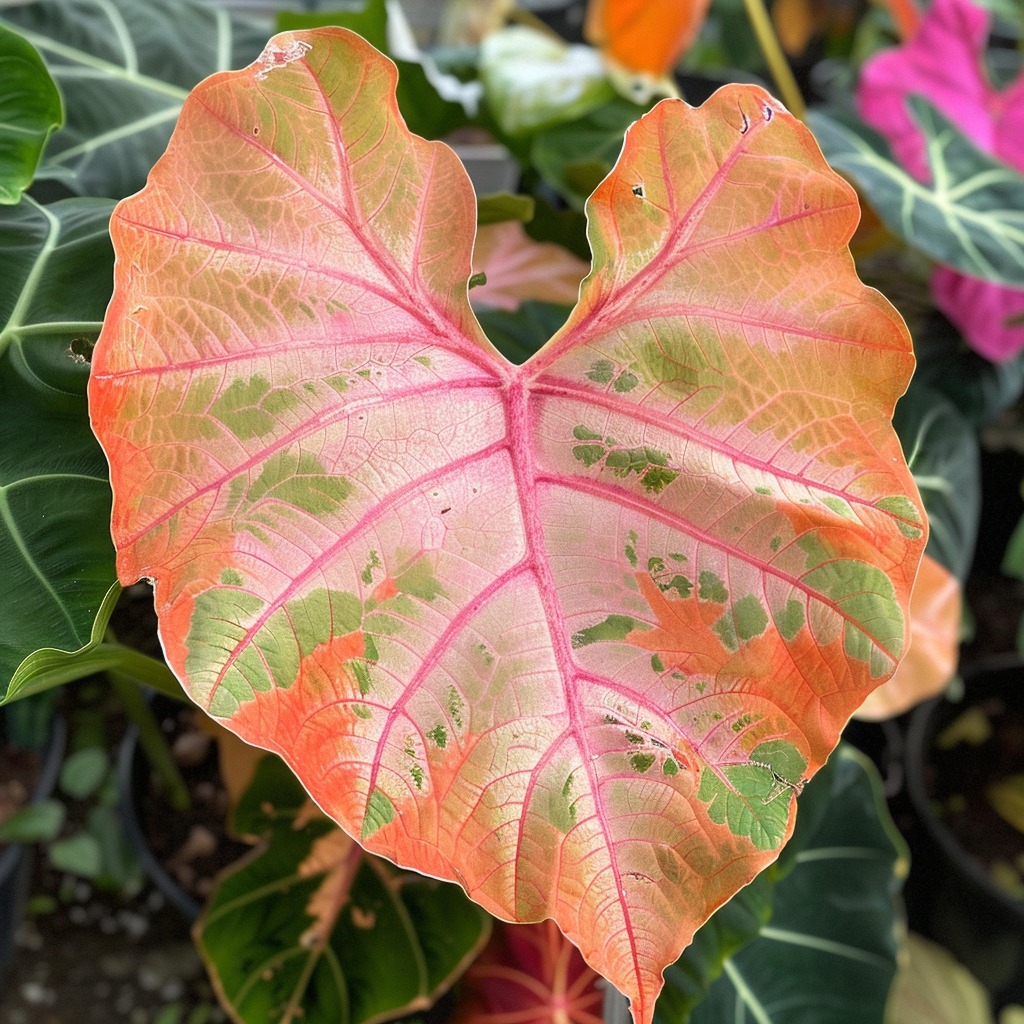
The Flower-Like Buds: A Dual Life
While caladiums are primarily celebrated for their stunning, heart-shaped leaves, they do, in fact, have a floral aspect that is intriguing yet often misunderstood. According to sources, caladiums can produce flower-like structures, but these aren’t the showy blooms we typically expect from flowering plants. Instead, they manifest as small, waxy spathes that are largely inconspicuous compared to their spectacular foliage. This raises questions about the plant’s evolutionary adaptation—why would a species so heavily focused on leaf aesthetics invest energy into something less visually impactful?
The Inconspicuous Flowers
Caladiums are known for their vibrant, heart-shaped leaves that come in a variety of colors, including red, pink, white, and green. While these foliage displays often steal the show, caladiums do produce flower-like structures, though they are quite different from the showy blooms of many other plants.
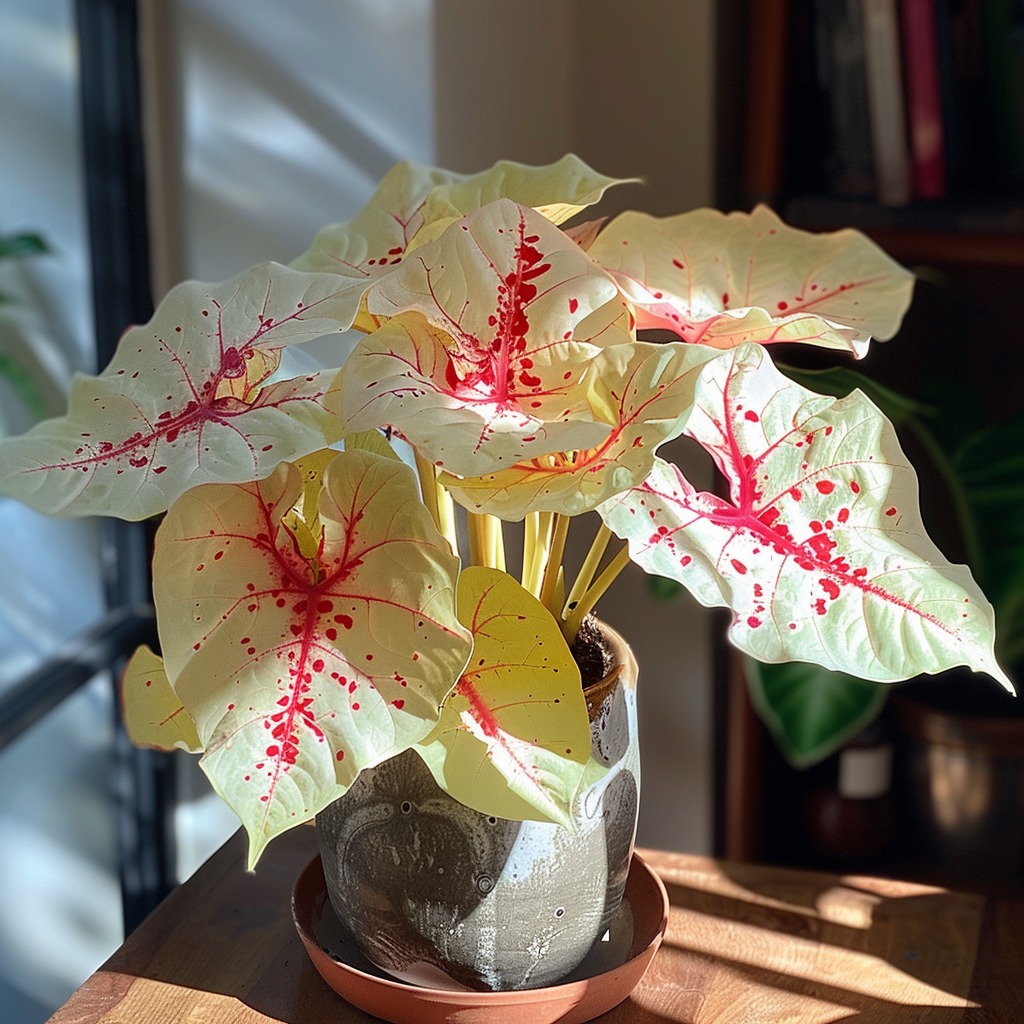
The “flowers” of caladiums are actually small, waxy spathes that emerge from the plant’s center. These spathes are typically white or pale green in color and can have a subtle, almost translucent appearance. They are often overlooked or mistaken for a part of the plant’s overall foliage, as they are much less conspicuous than the eye-catching leaves.
Evolutionary Adaptations and Priorities
One might ponder why caladiums, a plant so heavily focused on leaf production and aesthetics, would invest energy into producing these inconspicuous flower-like structures. The answer likely lies in the plant’s evolutionary adaptations and the priorities of its survival mechanisms.
Originating from the tropical forests of South and Central America, caladiums thrive under the canopy where light penetrates in dappled patterns. Their leafy architecture likely plays a crucial role in how they capture photosynthesis in low-light conditions. Therefore, one might argue that the sparse flowering serves a strategic purpose, or perhaps the plant prioritizes its primary survival mechanism—leaf production—over reproduction.
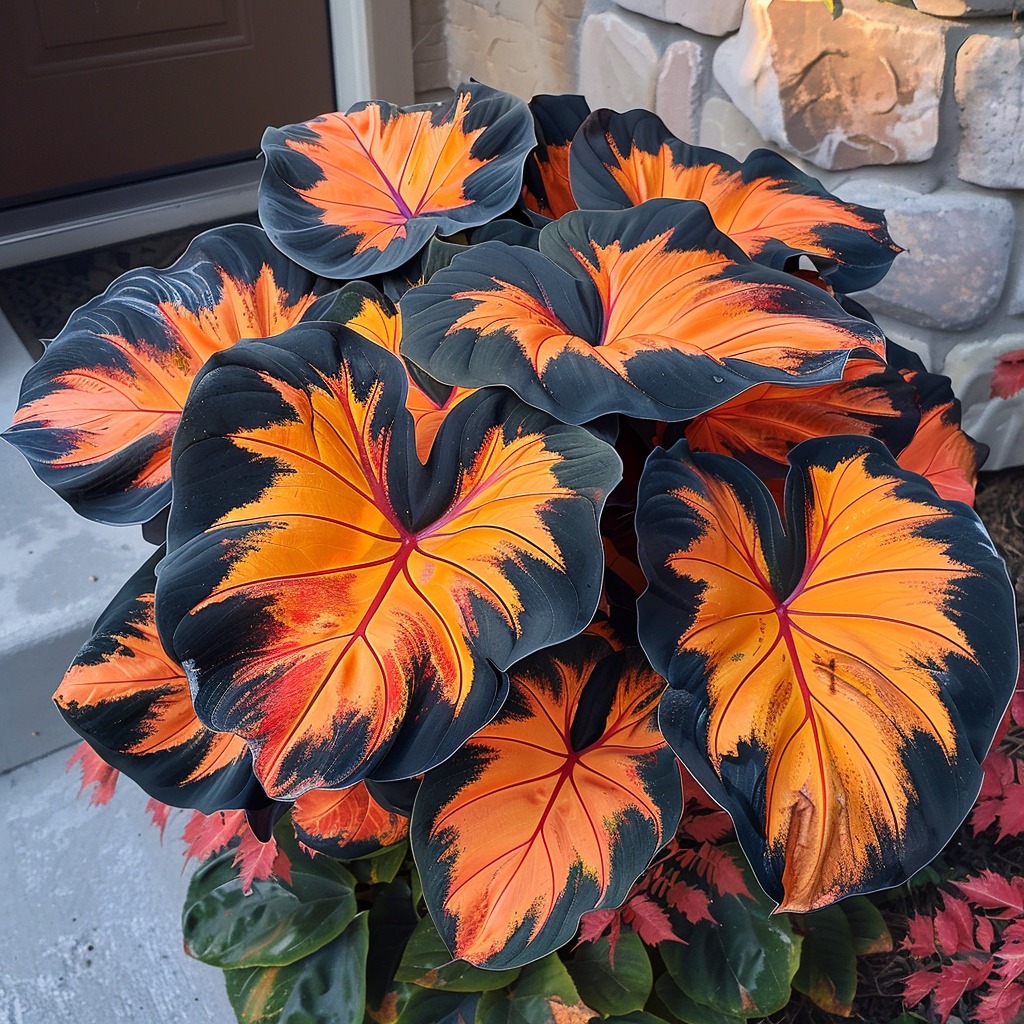
The Unseen Lifeblood of Nature
The caladium’s focus on leaf growth over showy blooms can be seen as a metaphor for the often-overlooked roles played by various beings within ecosystems or social structures. Just as the caladium focuses its energy on growing robust leaves, sometimes, it is those who nurture and stabilize—the unseen lifeblood of society—who deserve our acknowledgment.
These unsung heroes, like the caladium’s inconspicuous flowers, quietly support the greater good from behind the scenes, often overshadowed by those who flourish in the limelight. This dynamic encourages us to appreciate the subtler expressions of nature and life, where splendor does not always mean loud displays, but can instead dwell in harmony with one’s surroundings.
The Roots of Their Allure: Native Heritage
Originating from the tropical forests of South and Central America, caladiums thrive under the canopy where light penetrates in dappled patterns. Their leafy architecture likely plays a crucial role in how they capture photosynthesis in low-light conditions. Therefore, one might ponder whether the sparse flowering serves a strategic purpose or if the plant prioritizes its primary survival mechanism—leaf production—over reproduction.
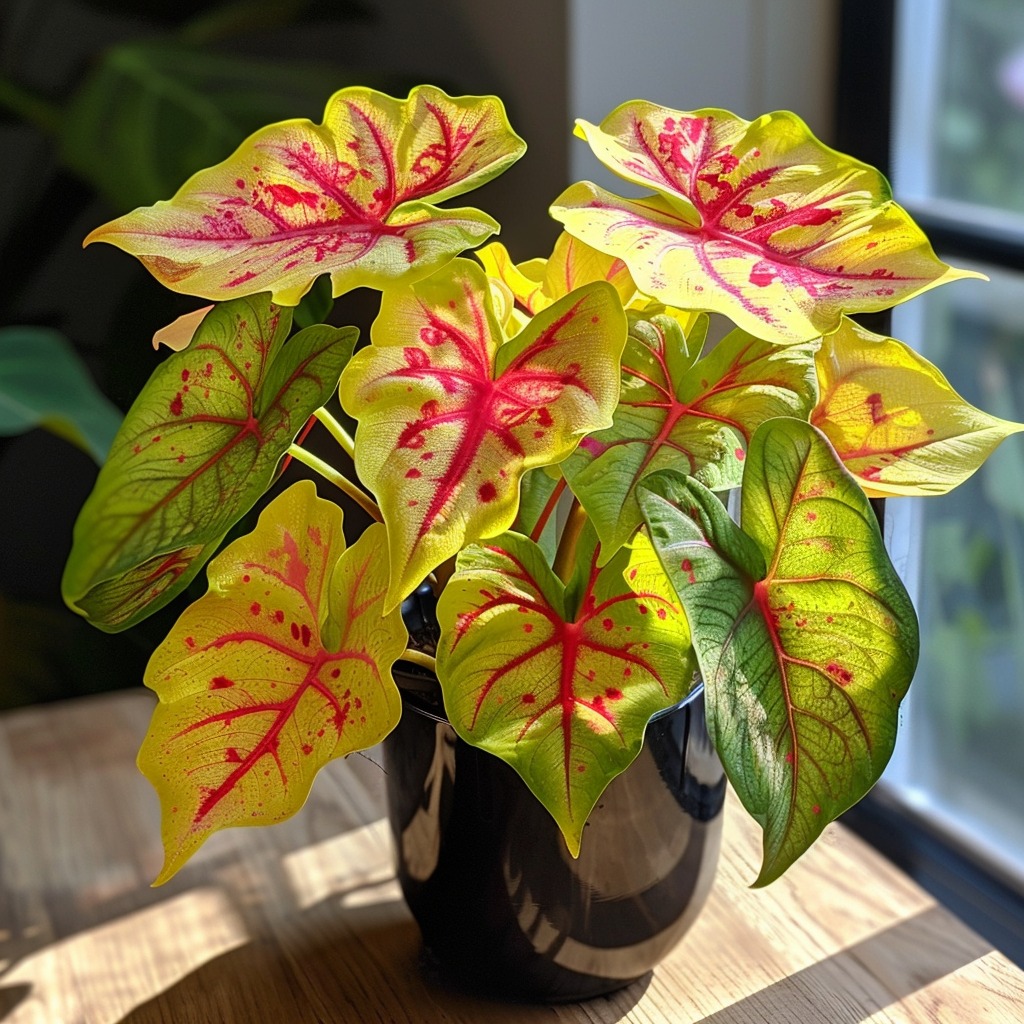
Tropical Adaptation and Photosynthesis
Caladiums are native to the lush, tropical forests of South and Central America, where they have evolved to thrive in the dappled light conditions found under the forest canopy. Their large, heart-shaped leaves are specially adapted to capture photosynthesis in these low-light environments, allowing them to efficiently convert sunlight into the energy they need to survive and grow.
The plant’s focus on leaf production over showy blooms is likely a result of this evolutionary adaptation. By channeling its resources into developing its vibrant, eye-catching foliage, the caladium ensures that it can effectively capture and utilize the limited light available in its native habitat.
Balancing Survival and Reproduction
While the caladium’s sparse flowering may seem like a curious trait, it likely represents a strategic balance between the plant’s survival and reproductive needs. In the resource-constrained environment of the tropical forest, the caladium must prioritize its primary survival mechanism—photosynthesis and leaf production—over the energy-intensive process of flower and seed development.
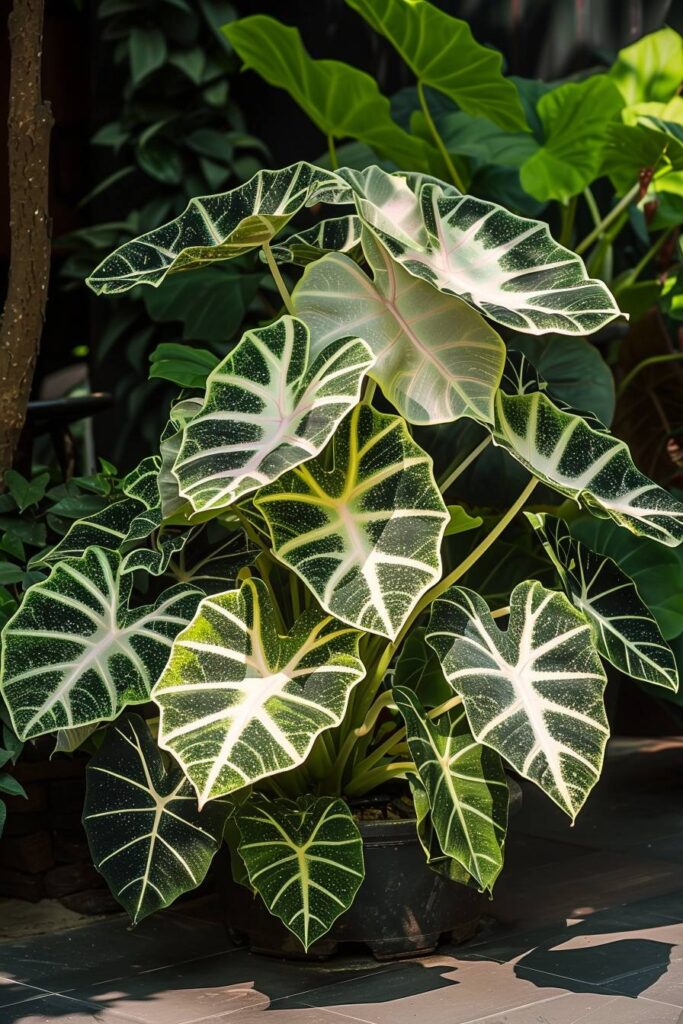
By investing the majority of its resources into its foliage, the caladium ensures that it can capture enough light to thrive and reproduce, albeit in a more subtle and understated way. This trade-off between leaf aesthetics and floral displays highlights the intricate adaptations and priorities that shape the evolution of plant species in their natural habitats.
Adapting to Changing Environments
As caladiums continue to be cultivated and grown in a variety of environments, both natural and man-made, it will be interesting to observe how the plant’s adaptations and priorities shift in response to these new conditions.
For example, in areas with more abundant light or different soil conditions, caladiums may allocate more energy towards their flowering structures, leading to more pronounced and visually striking blooms. Alternatively, in environments that more closely mimic the plant’s native tropical forest habitat, the caladium’s focus on leaf production may remain the dominant strategy.
Understanding the roots of the caladium’s allure, its native heritage, and the evolutionary adaptations that have shaped its growth and development can provide valuable insights into the plant’s intriguing dual nature—one that balances the spectacular with the subtle, and the conspicuous with the unsung.
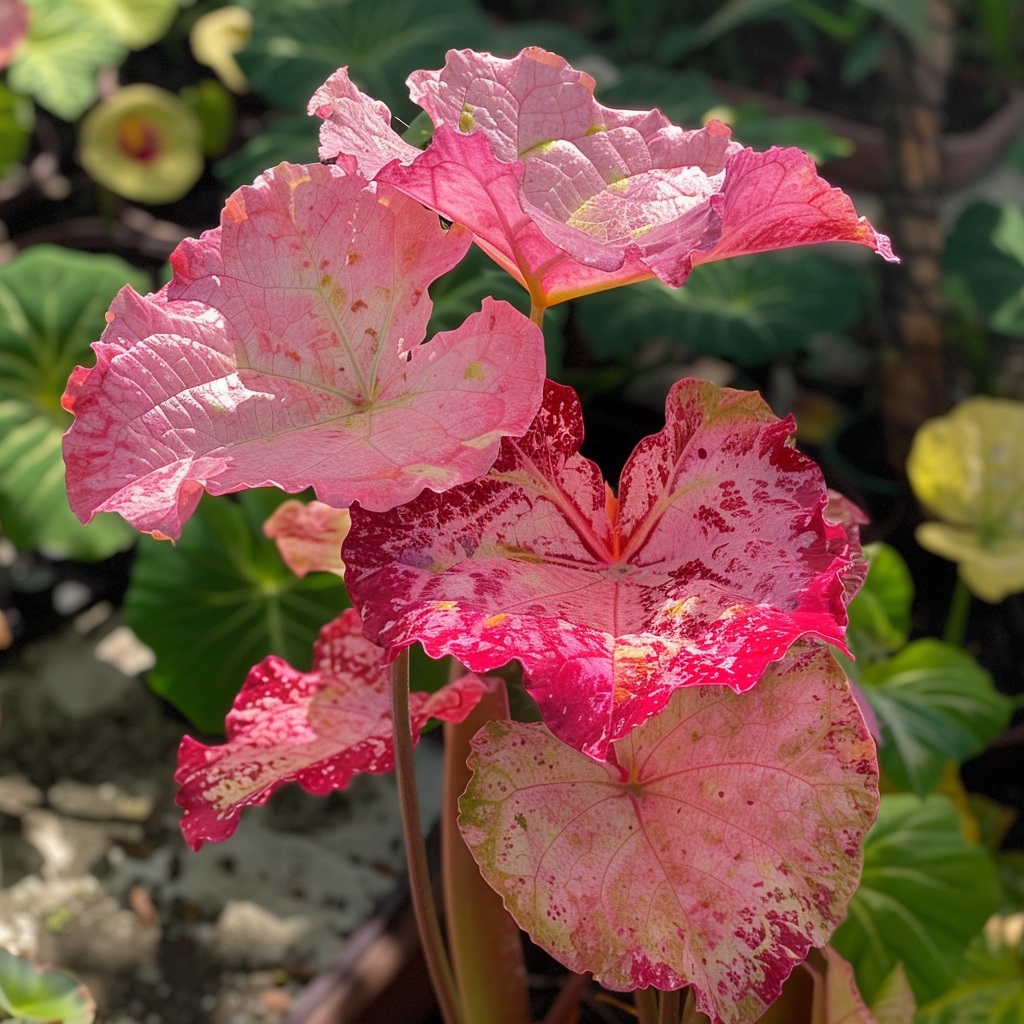
A Seasonal Performance: Timing and Care
When exploring the practical aspects of growing caladiums, care tips abound regarding the best practices for planting bulbs, particularly around late spring when the danger of frost has passed. This cyclical routine emphasizes a seasonality tied to their growth spurts. When caladiums do produce blooms, it’s a fleeting performance; hence proper care can lead to a flourishing display of leaves that steal the show—as flowers often do in other botanical contexts.
Seasonal Cycles and Growth Patterns
Caladiums are tropical perennials that exhibit a distinct seasonal growth pattern. In temperate climates, caladium bulbs are typically planted in late spring, once the danger of frost has passed. This timing aligns with the plant’s natural life cycle, as it emerges from a dormant state and begins to produce its lush, vibrant foliage.
As the growing season progresses, caladiums will reach their peak foliage display, often overshadowing any floral structures that may emerge. The plant’s energy is primarily channeled into the development of its striking leaves, which can range in color from deep red to bright pink and white.
Fleeting Floral Displays
While caladiums are renowned for their foliage, they do produce small, inconspicuous flower-like structures known as spathes. These spathes typically appear during the plant’s active growth phase, often in the summer months.
However, the caladium’s floral display is often short-lived and easily overlooked, as the plant’s energy is largely focused on maintaining its impressive leaf growth. The small, waxy spathes can be easily missed amidst the plant’s vibrant foliage, and they often fade quickly, leaving little visual impact.
Proper Care for Optimal Growth
Achieving a flourishing display of caladium leaves requires attentive care and attention to the plant’s specific needs. Factors such as soil quality, moisture, and sunlight exposure all play a crucial role in the plant’s overall health and development.
By providing caladiums with the right growing conditions, gardeners can ensure that the plant’s energy is directed towards the production of its spectacular foliage, rather than being diverted into the development of the more subtle floral structures.
A Metaphor for Life’s Subtleties
The caladium’s seasonal performance and its focus on leaf growth over floral displays can be seen as a metaphor for the often-overlooked aspects of life. Just as the plant’s vibrant foliage steals the show, there are many unsung heroes in our own lives and societies who toil tirelessly behind the scenes, their contributions often overshadowed by those who thrive in the limelight.
The caladium’s fleeting floral displays, like these unseen supporters, remind us to appreciate the subtleties and nuances that enrich our world. Sometimes, the greatest beauty and significance lie not in the grand, showy displays, but in the quiet, persistent efforts that sustain the greater good.
Toxic Beauty: Cautionary Tales
In terms of ecological dynamics, it’s also imperative to note that caladiums contain compounds that are toxic if ingested, especially by pets. This highlights an interesting entwining of beauty with danger, creating a unique narrative. Much like beautiful but potentially harmful relationships or situations in life, caladium flowers add an extra dimension—inviting admiration yet requiring caution, creating a complex interplay between attraction and risk.
The Toxic Nature of Caladiums
Caladiums, with their vibrant and alluring foliage, conceal a secret danger – they contain compounds that are toxic if ingested, particularly by pets. This dual nature of the plant, where its beauty is intertwined with a cautionary tale, adds an intriguing layer to its narrative.
The toxic compounds found in caladiums are primarily oxalates, which can cause severe irritation and swelling in the mouth, throat, and digestive system if consumed. This potent toxicity serves as a natural defense mechanism for the plant, protecting it from herbivores and other potential threats.
The Complexity of Attraction and Risk
The toxic nature of caladiums mirrors the complexities that often arise in the human experience. Just as some relationships or situations in life can appear beautiful and captivating on the surface, they may also harbor hidden dangers or risks.
This interplay between attraction and risk, beauty and danger, creates a fascinating dynamic that encourages us to approach the world with a degree of caution and discernment. The caladium’s toxic secret serves as a poignant reminder that sometimes, what seems most alluring may also pose the greatest threat.
Navigating the Delicate Balance
Navigating the delicate balance between admiration and caution when it comes to caladiums (or any potentially hazardous entity) requires a thoughtful and nuanced approach. While we can certainly appreciate the plant’s stunning visual appeal, it is crucial to understand and respect its inherent risks, especially in the context of household environments and interactions with pets or children.
By educating ourselves about the caladium’s toxic properties and taking appropriate precautions, we can strike a balance between enjoying the plant’s beauty and ensuring the safety of those around us. This awareness and proactive approach not only safeguards our well-being but also allows us to engage with the natural world in a more responsible and harmonious manner.
Lessons for Life
The cautionary tale of the caladium’s toxic nature serves as a metaphor for the complexities and challenges we often face in our own lives. Just as we must approach the plant with a combination of admiration and caution, we must also navigate the various situations and relationships that present both allure and risk.
By recognizing the potential dangers that may lurk beneath the surface of seemingly attractive prospects, we can develop a more discerning and prudent approach to our choices and interactions. This awareness empowers us to make informed decisions, safeguarding our well-being while still appreciating the beauty and complexity of the world around us.
Cultural Significance and Symbolism
Caladiums carry cultural symbolism across various societies, often embodying themes of love and life due to their vibrant colors and shapes. They are celebrated not necessarily for their flowers but for the ambiance they create within garden spaces. In contrast, one can view their scant flowering as an allegory for the understated elegance found in subtler aspects of life. This interaction between flora and environment prompts reflections on nature’s inherent philosophies—where splendor does not always mean loud displays but can instead dwell in harmony with one’s surroundings.
Caladiums in Cultural Contexts
Across different cultures and societies, caladiums have often been imbued with symbolic meaning and significance. In many regions, these tropical plants are associated with themes of love, life, and vitality, due in part to their vibrant, heart-shaped foliage.
In some traditions, caladiums are used as decorative elements in gardens and outdoor spaces, where their lush, colorful leaves are celebrated for the ambiance and aesthetic they create. The plant’s ability to thrive in shaded, low-light conditions has also contributed to its cultural significance in certain contexts.
Subtlety and Elegance in Nature
While caladiums are often celebrated for their stunning foliage, their relatively inconspicuous floral structures can be viewed as an allegory for the understated elegance and beauty found in nature’s more subtle expressions.
In a world that often values loud, grandiose displays, the caladium’s approach to reproduction and growth serves as a reminder that true splendor does not always manifest in the most visible or attention-grabbing ways. Instead, it can be found in the harmonious integration of a plant with its environment, in the quiet persistence of its survival strategies, and in the nuanced interplay of its various parts.
Reflections on Nature’s Philosophies
The caladium’s cultural significance and the contrast between its vibrant foliage and its understated flowering prompts reflection on the inherent philosophies and wisdom within the natural world.
This interplay between the bold and the subtle, the conspicuous and the unsung, encourages us to consider the deeper lessons that plants like the caladium can offer. Perhaps there is beauty in the harmony that can be found between a being and its surroundings, or in the unassuming yet vital contributions of those who quietly support the greater good.
Through the lens of the caladium, we are invited to expand our appreciation of nature’s multifaceted expressions, and to consider how these insights might inform our own approaches to life, relationships, and the world around us.
Conclusion: Embracing the Enigma
The enigma of caladium flowers serves as a captivating exploration of the plant’s duality, revealing a world of botanical intrigue and inviting deeper reflections on the human experience. From the inconspicuous floral structures to the plant’s evolutionary adaptations, cultural significance, and cautionary tales, the caladium’s story encourages us to look beyond the obvious and embrace the nuances that often go unnoticed.
In a world that often prizes the bold and the grandiose, the caladium stands as a testament to the power of the subtle, the understated, and the unseen. Its story challenges us to shift our perspectives, to appreciate the lifeblood that sustains our ecosystems and societies, and to recognize that true beauty and significance can sometimes dwell in the most unexpected places.
By unraveling the enigma of caladium flowers, we not only gain a deeper understanding of these tropical plants but also unlock a window into the inherent philosophies of the natural world. This journey invites us to contemplate our own roles, priorities, and the delicate balances that shape our lives, reminding us that sometimes, the most profound insights can be found in the most unassuming of places.
